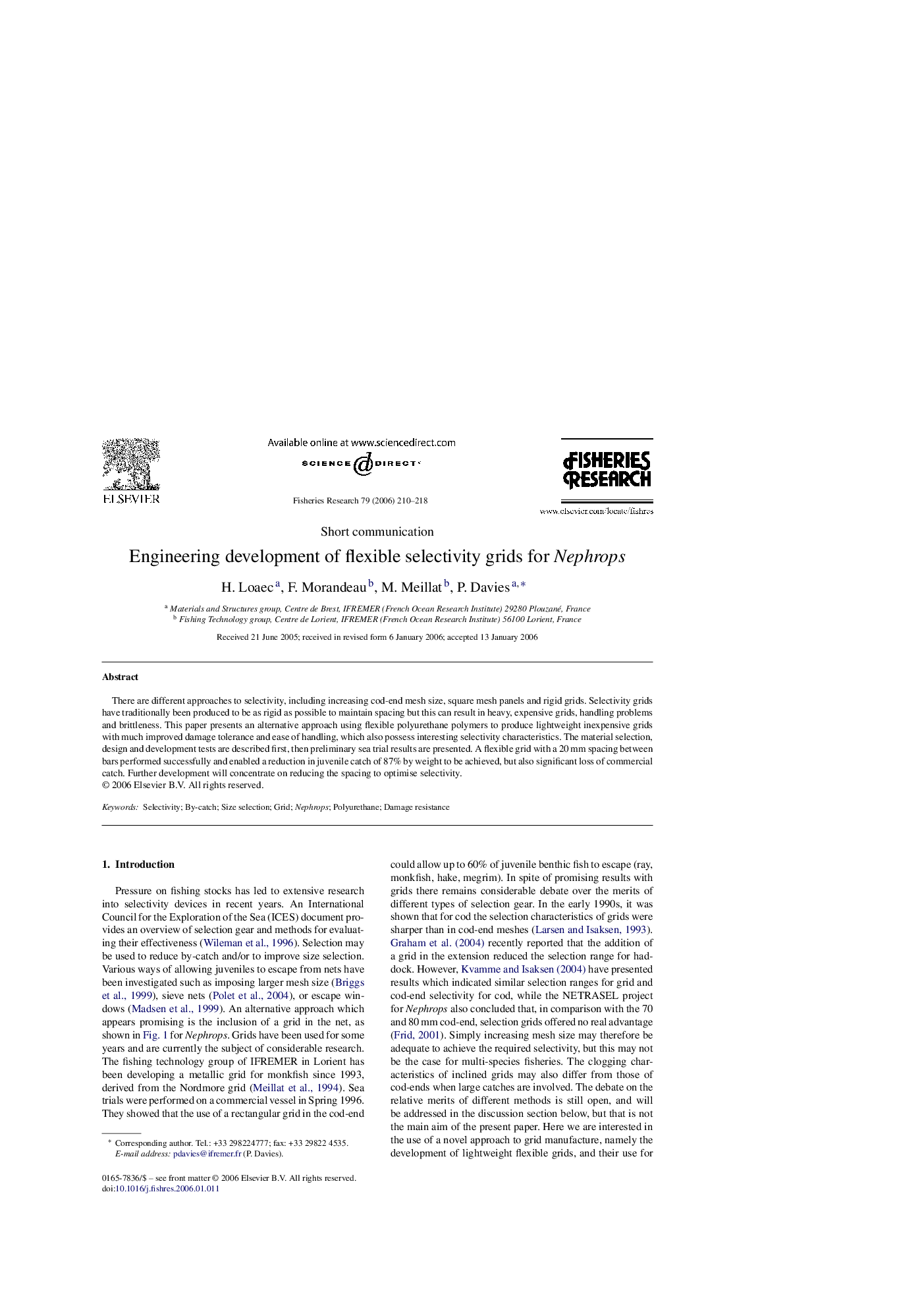| Article ID | Journal | Published Year | Pages | File Type |
|---|---|---|---|---|
| 4545036 | Fisheries Research | 2006 | 9 Pages |
Abstract
There are different approaches to selectivity, including increasing cod-end mesh size, square mesh panels and rigid grids. Selectivity grids have traditionally been produced to be as rigid as possible to maintain spacing but this can result in heavy, expensive grids, handling problems and brittleness. This paper presents an alternative approach using flexible polyurethane polymers to produce lightweight inexpensive grids with much improved damage tolerance and ease of handling, which also possess interesting selectivity characteristics. The material selection, design and development tests are described first, then preliminary sea trial results are presented. A flexible grid with a 20Â mm spacing between bars performed successfully and enabled a reduction in juvenile catch of 87% by weight to be achieved, but also significant loss of commercial catch. Further development will concentrate on reducing the spacing to optimise selectivity.
Related Topics
Life Sciences
Agricultural and Biological Sciences
Aquatic Science
Authors
H. Loaec, F. Morandeau, M. Meillat, P. Davies,
